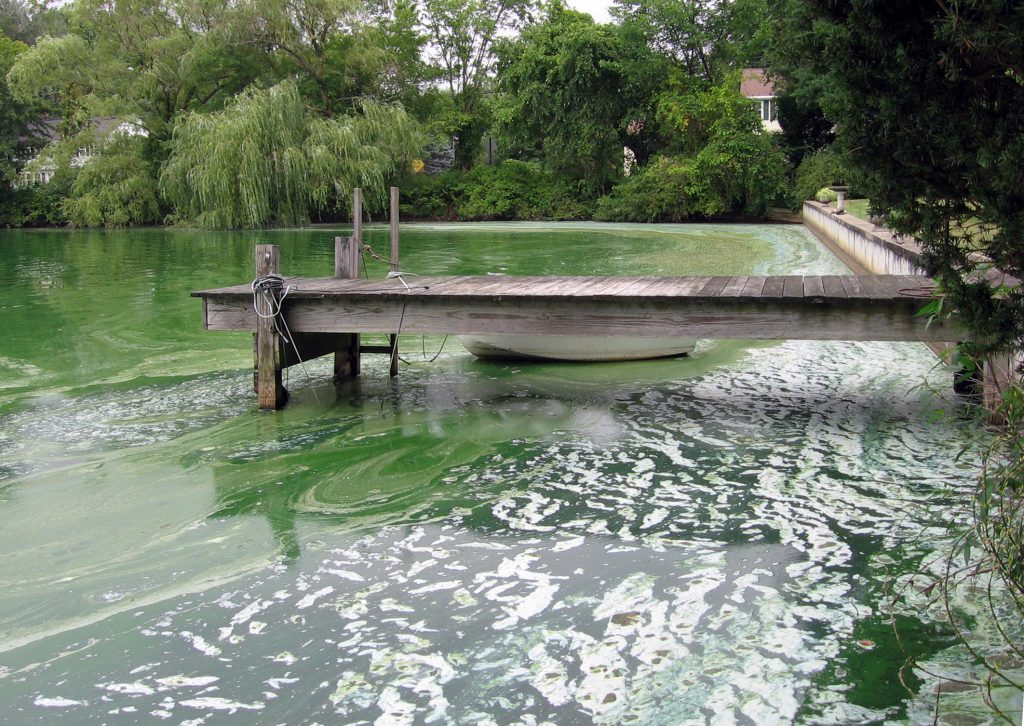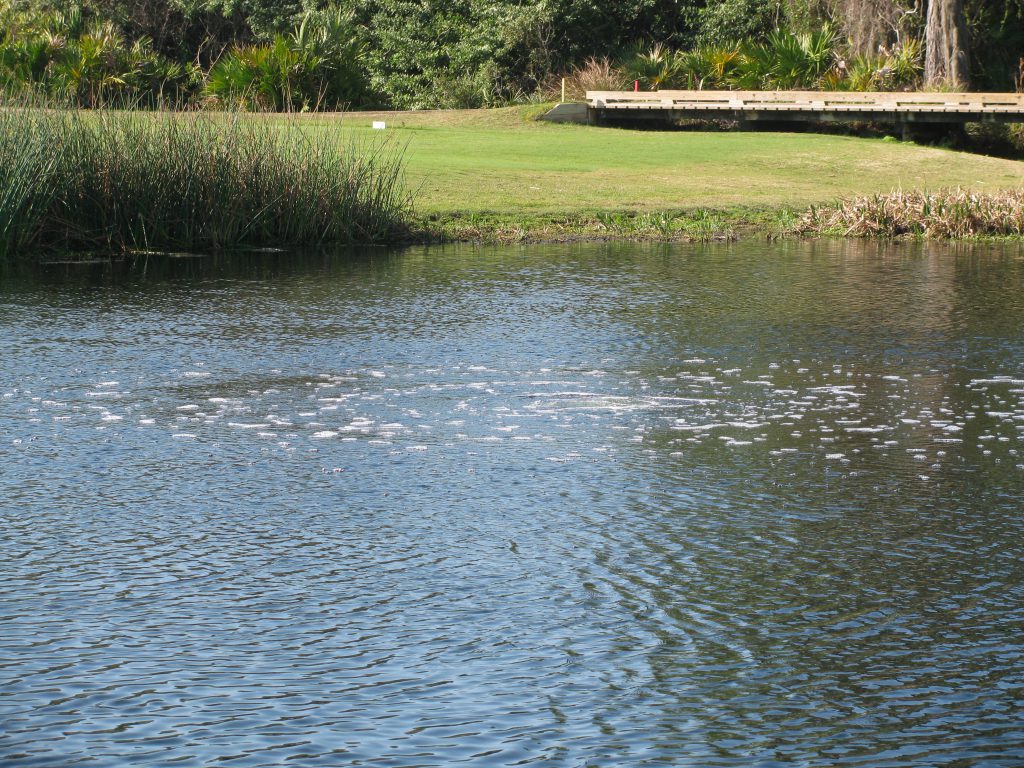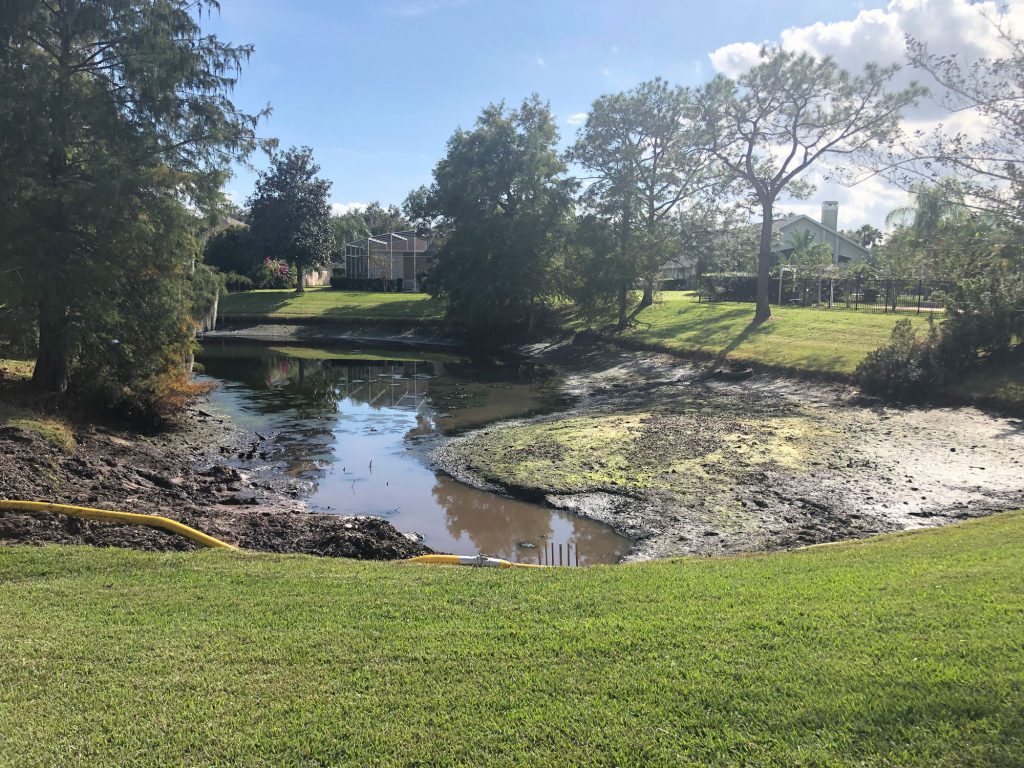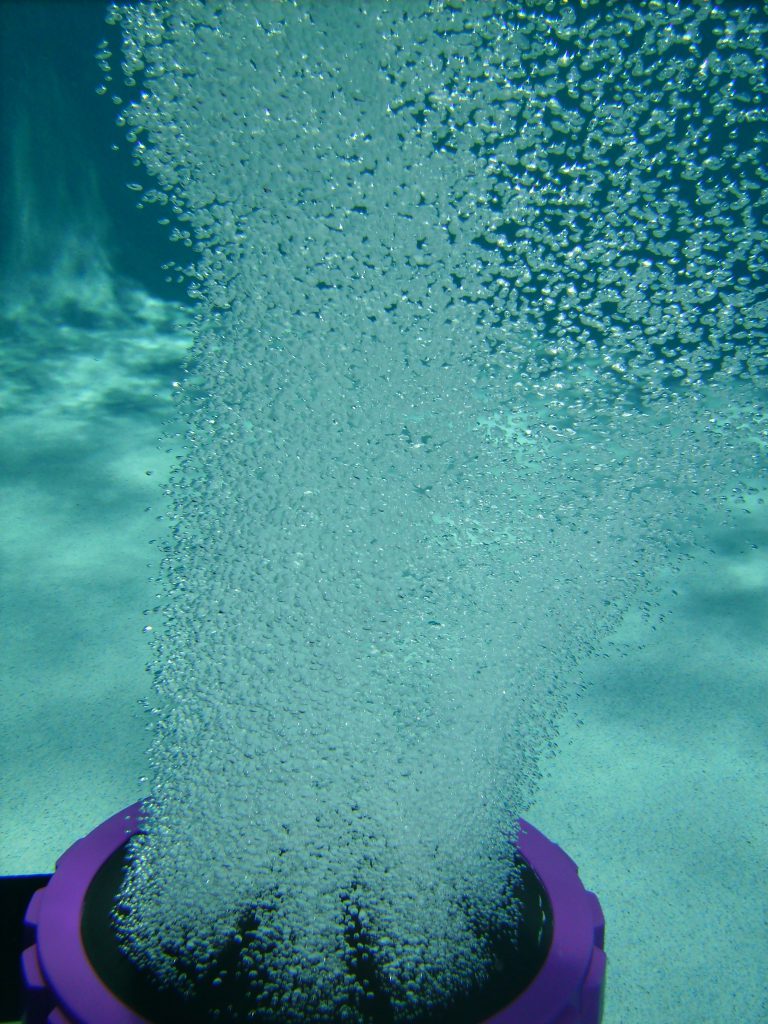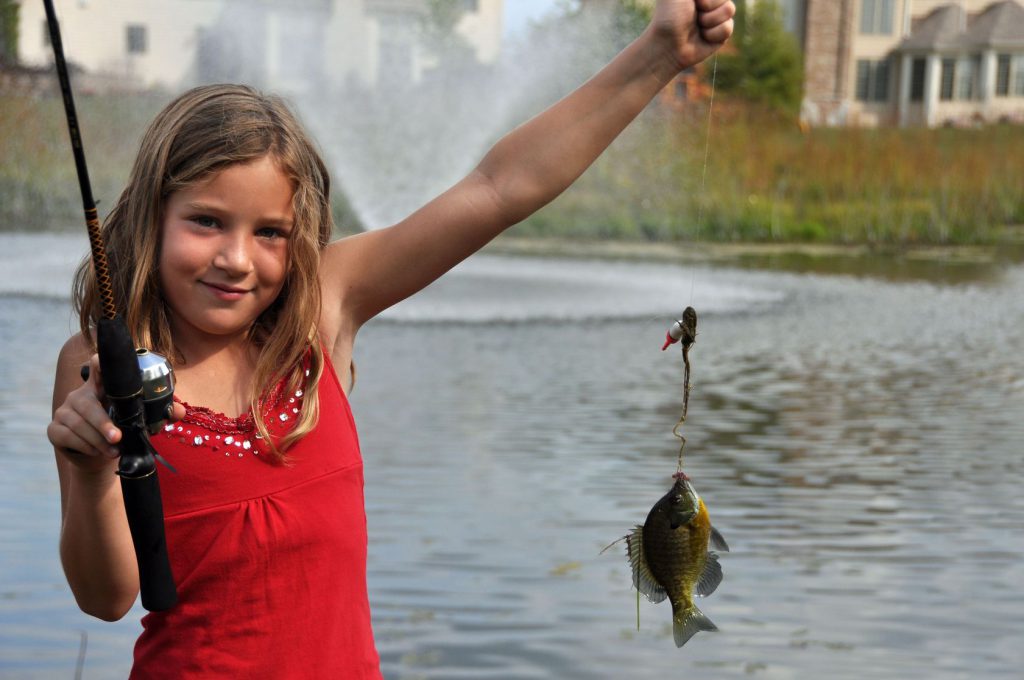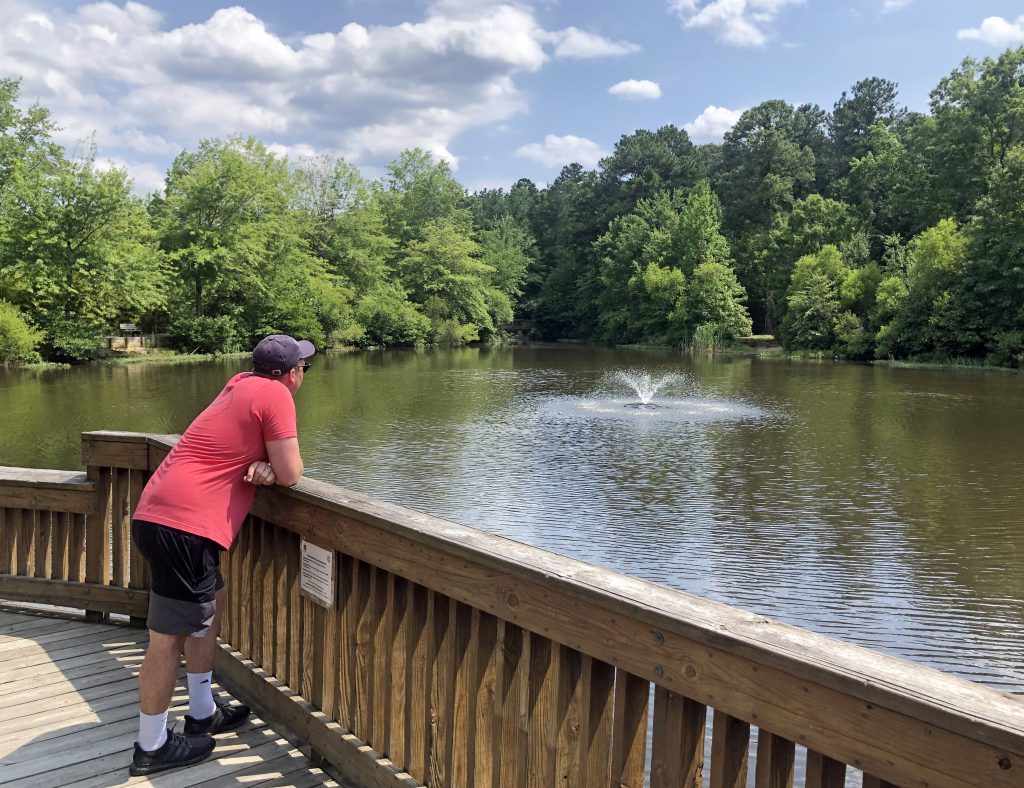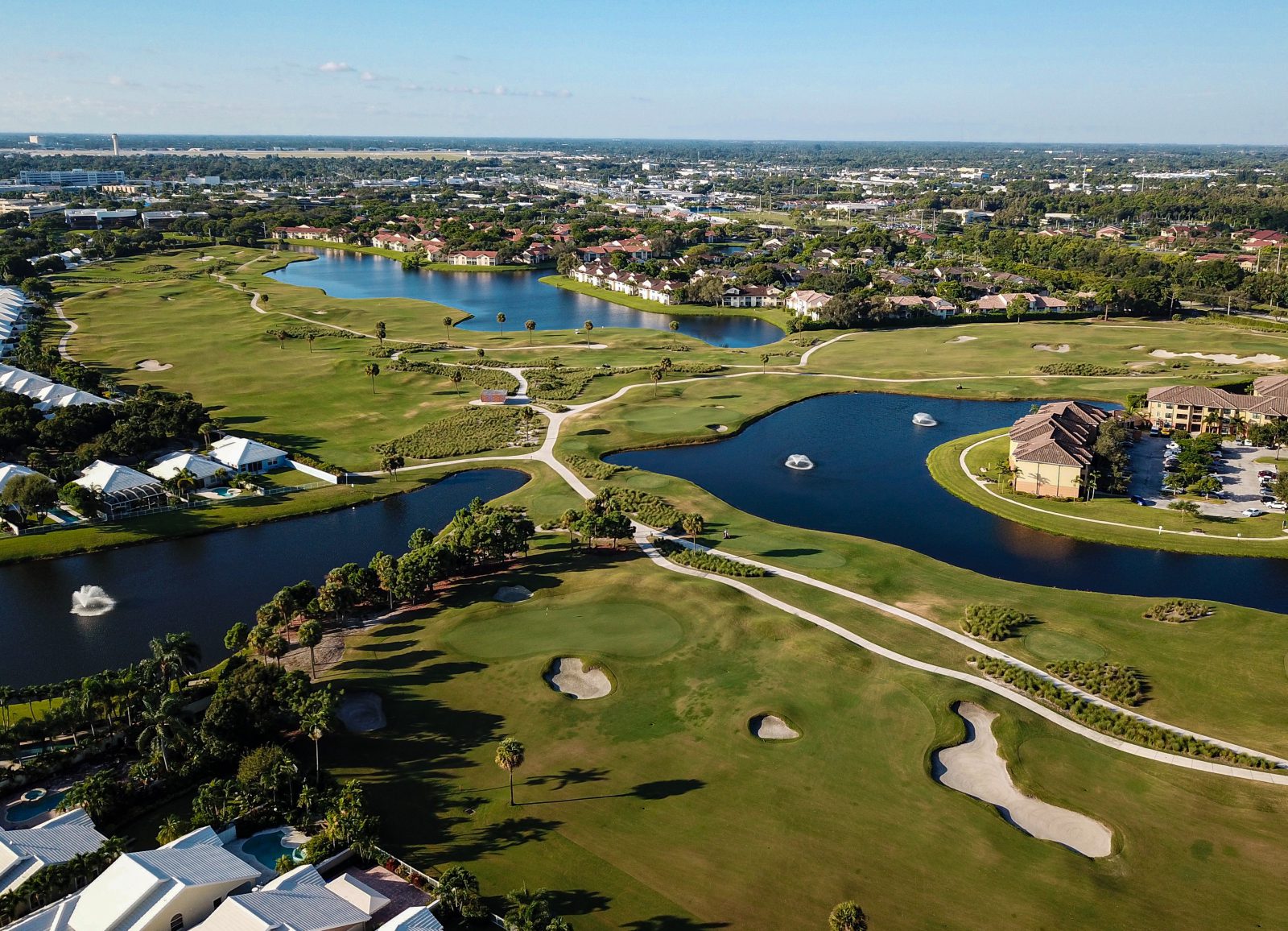
Does My Pond Need Aeration?
Ponds serve many different purposes for the communities that surround them. Often, they create aesthetic appeal and provide beautiful ecosystems to enjoy all year long. However, if left unmanaged, ponds can develop chemical and physical imbalances that jeopardize the health of the waterbody as well as the surrounding habitat.
“Does my pond need an aerator?” may not be the first question that comes to mind when confronted with a pond choked with algae and aquatic weeds. But, the dissolved oxygen (DO) supplied by aeration equipment can make a big difference when used as part of a comprehensive lake and pond management plan.
DO helps convert excess nutrients into forms that make way for the development of healthy green phytoplankton and native fish in the pond. This can help reduce the growth of undesirable algae and dangerous cyanobacteria that threatens humans, pets, and wildlife that interact with it.
And, most importantly, improving DO levels and water circulation helps reduce sediment accumulation at the bottom of the pond – one of the most common signs that your pond is aging. When an aeration system is present, a pond tends to be naturally healthier and the need for dredging can often be prolonged or prevented.
How Do I Know if My Pond Has Enough DO?
Water quality testing is the most accurate method of determining if your pond has enough oxygen. However, there are a few signs that can tell you if your pond’s DO level is low. Paying attention to these signs can help you quickly stave off potential problems.
Bad odors – If the pond is poorly oxygenated, excess fish waste, decaying vegetation, and other organic matter can give off distinctly horrible odors. A strong, malodorous smell can indicate areas of stagnation and oxygen deficiency.
Aggressive algae growth – A thick layer of scummy or filamentous algae can indicate that excess nutrients are present in the water. Ponds that don’t have adequate circulation and gas exchange create ideal growing conditions for nuisance and harmful algal blooms.
Fish gasping at the water’s surface – Fish gasping for air near the surface or near water features might mean that they are oxygen-starved. This is often seen before a fish kill occurs.
Importance of Aeration for Pond Water
Adding an aeration system to your pond not only helps fish and native wildlife but also improves the overall health of the pond’s ecosystem. Here are the top five reasons to consider utilizing aeration in your pond.
1) Increases Dissolved Oxygen (DO) Levels
DO refers to the level of free, non-compound oxygen present in water and is a key indicator of water quality. Aeration increases the levels of DO needed by fish and beneficial bacteria to thrive. Without DO, a pond will go into an anaerobic state, which can severely interrupt the natural cycle of life and put your pond on an unhealthy path that is difficult and costly to reverse.
2) Reduces Pond Muck
As ponds age, nutrients accumulate on the pond’s bottom and turn into muck. This is not only unpleasant to see and feel between your toes during recreation, it can also make ponds smell bad. Aeration increases the DO in the water to combat decomposing vegetation and debris. Well-aerated pond water also encourages the growth of beneficial aerobic bacteria that help reduce muck build-up by consuming excess nutrients.
3) Improves Water Quality
Muck development is not the only side effect of excess nutrients. When suspended in the water column, excess nutrients can make your pond look murky. They can also cause the growth of algae that make the pond appear cloudy or scummy. Aeration systems circulate the water to prevent the suspension of organic matter and convert nutrients to forms that cannot sustain further growth.
4) Eliminates the Thermocline
The border between the colder, deeper water of the pond and the warmer surface water is called the thermocline. Aeration slowly circulates and mixes these two layers, moving cooler, oxygen-deficient water from the bottom to the pond’s surface and infuses it with DO. The warmer, oxygenated water then moves to the bottom of the pond to replenish the beneficial bacteria. This balance is important for long-term waterbody health.
5) Lowers the Risk of Fish Kill
Fish die from time to time as the natural cycle of life, but when many die all at once, it is usually linked to low DO in the pond. When a pond’s temperature is high in the summer, there is less DO in the water, causing fish to die off. This can also occur if different water layers are rapidly incorporated during a storm or weather event. In conjunction with increased movement, an aeration system can help a pond’s temperature and DO levels remain more stable, creating desirable conditions for aquatic life from top to bottom.
How to Keep Your Pond Properly Aerated
The before and after of an aerated pond is pretty clear. What was once a murky, smelly, and overgrown pond becomes a healthy, beautiful environment for fish and wildlife. Homeowners and community managers have several aeration solutions to choose from based on their specific property needs and budget. These aeration tools can be utilized alone or in tandem depending on desired results:
Floating fountains – Fountains not only provide aesthetic beauty through pleasing spray patterns and lighting, but they also increase circulation and oxygen transfer near the surface of the water. They are most effective in shallow waterbodies.
Submersed aerators – Placed on the bottom of the waterbody, submersed aerators release bubbles that circulate and oxygenate the water column as they rise to the surface. They can be used in waterbodies of any depth.
Long-Term Water Quality Health
With proper maintenance, aeration equipment can last for many years. As part of a SOL Pro Annual Management Program, aquatic specialists inspect and maintain fountains and aerators on a monthly basis. Lake and pond owners can also enjoy buffer management, shoreline weed control, algae and cyanobacteria treatments, nutrient remediation, and even subtle aesthetic enhancements like eco-friendly pond dye as part of a year-round program. Contact your freshwater management professional to learn how a SOL Pro Plan can help transform your waterbody.
Achieve Healthy Water with Aeration & Fountains
SOLitude Lake Management is a nationwide environmental firm committed to providing sustainable solutions that improve water quality, enhance beauty and preserve natural resources.
SOLitude’s team of aquatic scientists specializes in the development and execution of customized lake, stormwater pond, wetland and fisheries management programs. Services include water quality testing and restoration, algae and aquatic weed control, installation and maintenance of fountains and aeration systems, shoreline erosion control, muck and sediment removal and invasive species management. SOLitude partners with homeowners associations, golf courses, private landowners, businesses and municipalities. SOLitude Lake Management is part of Rentokil, a leading business services company, operating across the United States, Canada and Puerto Rico.
For more information, visit SOLitude Lake Management at solitudelakemanagement.com, and connect on Facebook, LinkedIn and Twitter.








